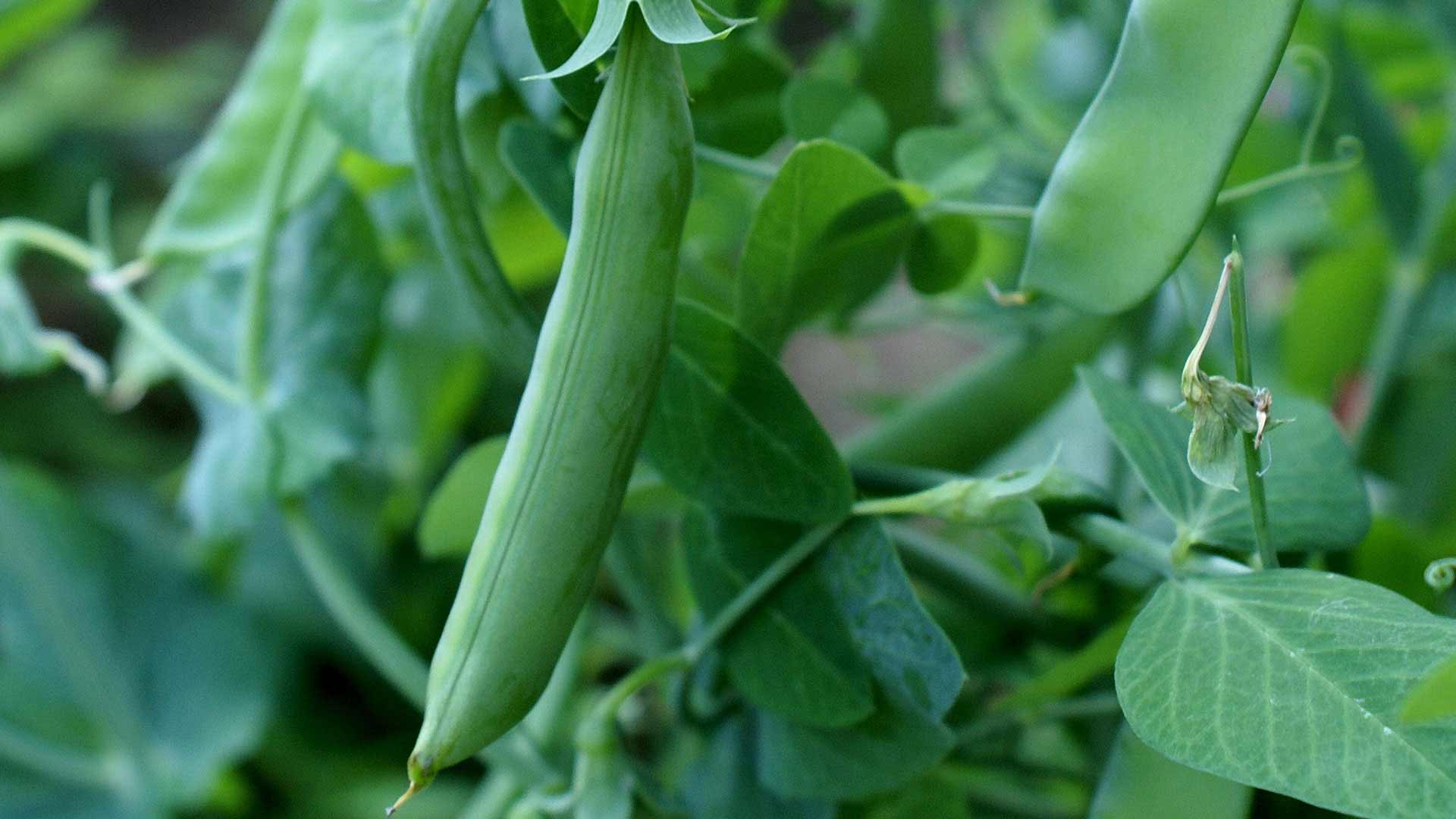4 Tips for Harvesting Snap Peas

Snap peas are delicious and nutritious. Here are some tips to maximize your harvest and your enjoyment.
When to harvest. Snap pea pods are sweetest and most tender in cool weather when they are young and while still increasing in size. GardenZeus recommends harvesting when pods have swelled but before they are fully plump. GardenZeus expert Darren Butler prefers to eat snap peas before the rounding of individual peas is apparent through the shell of a pod. Peas may quickly lose flavor and sweetness at maturity, during hot weather, and within hours to days after being harvested, as sugars in the pods and seeds turn to starches. Even 2 or 3 days of hot weather may negatively impact the flavor of snap peas. Older pods become tougher and stringy, with less sweetness and flavor, to the point that pods become inedible and the less-flavorful peas may need to be shelled to be eaten.
How to harvest. Pea plants are delicate and may have shallow root systems; stems are easily bent or broken. Avoid the temptation of pulling on pods to harvest them; this may break stems or pull the plant off of its trellis or support. For smaller or shallow-rooted plants, the harvesting-by-yanking method may partially or completely pull plants out of soil. GardenZeus recommends harvesting pea pods with garden shears, kitchen or garden scissors, or a sharp knife. An alternative, recommended only as a back-up measure or when the sudden need arises to graze on snap peas while garden shears and knives are at an impossible distance, is to use both hands: hold the stem above the pod with one hand, and use the other to pinch or pull off the pod.
How often to harvest. Harvest regularly, every day or every other day, to encourage production of new pods and maximize yield from snap peas over a possible bearing period of weeks to months. Pea plants may produce few new pods while maturing seeds in existing pods. Check plants carefully to avoid allowing any pods to stay on pea plants. As with all annual vegetables, the life cycle of pea plants is based on reproduction (blooming then setting seeds). If pods are allowed to persist on plants until the seeds are fully mature, the plant may stop producing, decline, and die. If you allow the first dozen or two pods to mature and develop seeds, that may exhaust the plant and become your entire harvest; whereas, if you harvest all pods when young, a pea plant may continue to produce consistently for 2 to 3 months or longer. Allowing a few pods on a given plant to go unharvested, such as those hidden among weeks or in another out-of-sight area, may reduce yield and shorten the harvest period.
When to eat. They are best used or preserved immediately after harvest, as sugars in the pods and seeds turn to starches. As with all garden vegetables, but especially those that are tempting to harvest and eat immediately, GardenZeus strongly recommends washing snap-pea pods thoroughly before eating (who knows what the last several bugs stepped in before they walked on your pea pods) but snap-pea pods are otherwise ready to eat immediately after harvest.
To view customized instructions for growing snap peas, go to GardenZeus and enter your zip code, then go to snap pea. For ideas on how to extend the harvest of snap peas in increasingly warm weather, see GardenZeus Tips for Shading Vegetables During Hot Weather.